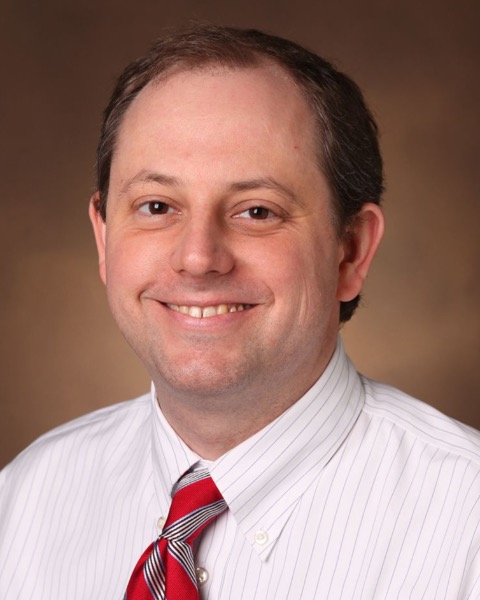Rapid Fire Abstracts
Longitudinal CMR Changes in dTGA patients after Atrial Switch (RF_TH_199)
- SH
Stephen Hudson, MD
Physician (Advanced Imaging Fellow)
Vanderbilt University Medical Center - SH
Stephen Hudson, MD
Physician (Advanced Imaging Fellow)
Vanderbilt University Medical Center - KG
Kristen George-Durrett, BSc
Research MRI Technologist
Vanderbilt University Medical Center - DP
David Parra, MD
Associate Professor, Director of Pediatric Imaging Laboratory
Vanderbilt University Medical Center 
Jonathan Soslow, MD, MSCI
Professor
Vanderbilt University Medical Center
Vanderbilt
Presenting Author(s)
Primary Author(s)
Co-Author(s)
Methods: Fifty-one patients with dTGA after atrial switch and a CMR with modified Look-Locker inversion recovery (MOLLI) sequence were identified. Indexed right ventricular end-diastolic and systolic volumes (RVEDVi, RVESVi), right ventricular ejection fraction (RVEF), and RV global longitudinal and circumferential strain (GLS, GCS) were calculated. T1 values were manually selected from the RV anterior (S1), lateral (S2), inferior (S3), and septal (S4) walls, respectively. ECV was measured by tracing the endocardial and epicardial contours of the systemic RV and segmenting this area into four equal segments correlating with each of the 4 RV walls as above (Fig 1). (T1 values were also estimated using these segments for comparison). For patients (3) with no recent hematocrit available, an estimate of 40% was used. Retrospective chart review was conducted for outcomes of interest including death, transplant (liver or heart), significant arrhythmia requiring ablation or pacemaker implantation, and surgical re-intervention after atrial switch. CMR values were compared in patients with and without outcomes of interest using a Student t-test (Table 1). A paired t-test was used to evaluate for significant changes between baseline and follow up CMR.
Results:
The median age was 40 years (IQR 36, 46) at the time of the first CMR. Prior to baseline CMR, twelve patients had previously undergone pacemaker implantation typically for sinus node dysfunction at a median time of 9 years (IQR 4.0,16.5). Ten patients required postoperative ablation or new antiarrhythmic medication for atrial arrhythmias either before or after the baseline CMR. Twelve patients had a follow-up CMR available for analysis at a median time of 2.65 years (2.1, 3.1) years after baseline CMR (Table 2). Patients who previously required pacemaker had significantly higher RV septal wall T1 values (1105 +/- 88 vs. 1040 +/- 87, p=0.030) and lateral wall ECV values (35.8 +/- 6.9 vs 31.4 +/- 6.1, p = 0.041). Patients with a history of pacemaker placement also had smaller RVEDVi (p=0.063) and RVESVi (p=0.089), though they did not reach statistical significance. Patients with subsequent death or transplant had higher ECV in the anterior wall (S1) (40.6 +/- 9.3 vs 32.5 +/- 6.0, p=0.029), although these outcomes were rare (1 death, 1 liver transplant, 1 listed for heart transplant). Progression of disease was minimal, with was no significant difference in CMR variables of interest from the baseline CMR to follow-up CMR.
Conclusion: Increase in ECV values may be predictive of poor outcomes after atrial switch including death and transplant. There was no significant progression of variables over a 2.5 year period.
Figure 1. ECV segment sampling for RV anterior wall (S1), RV free wall (S2), RV inferior wall (S3), and RV septal wall (S4). Native T1 performed on all 4 segments as well..jpg)

